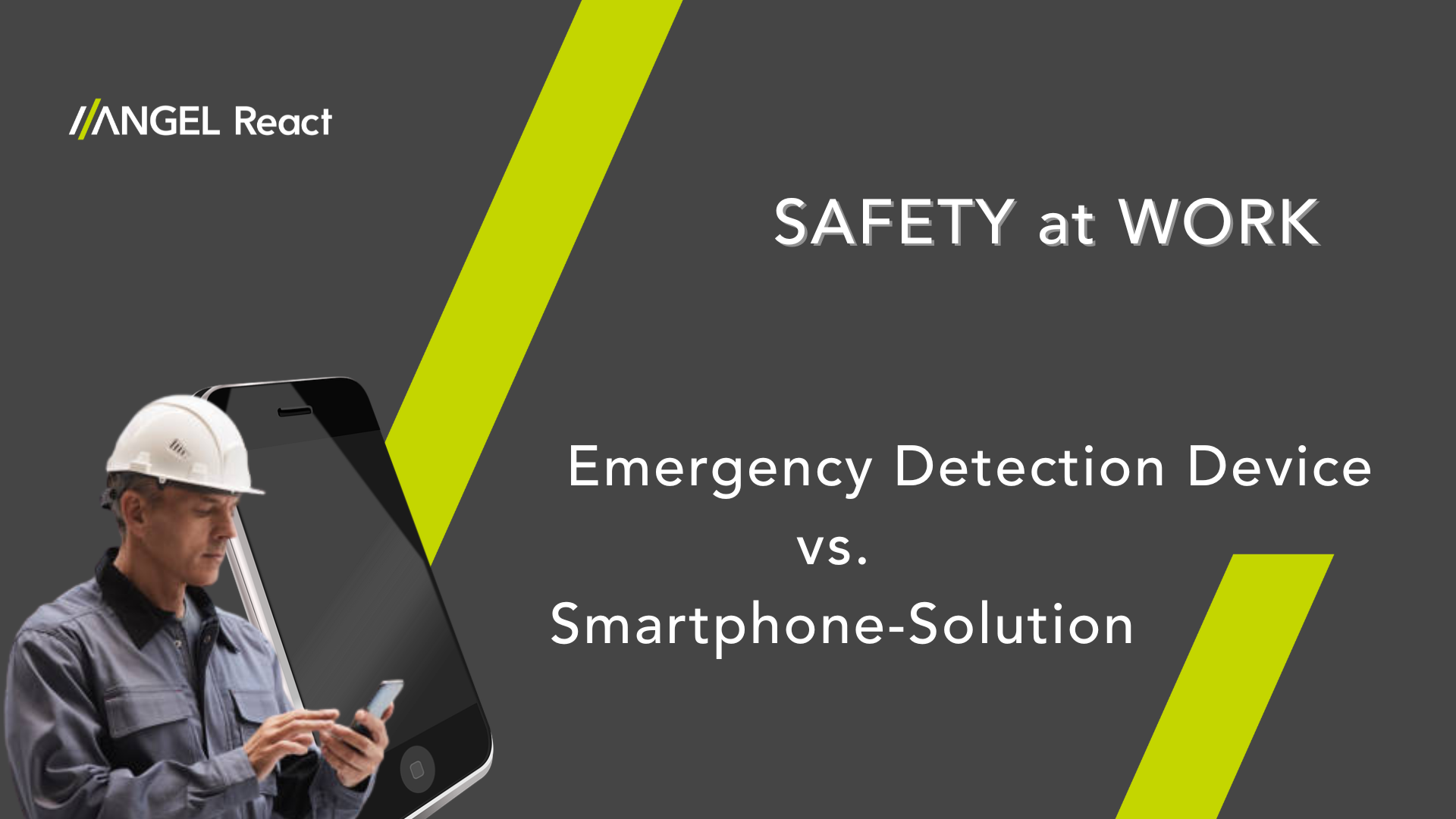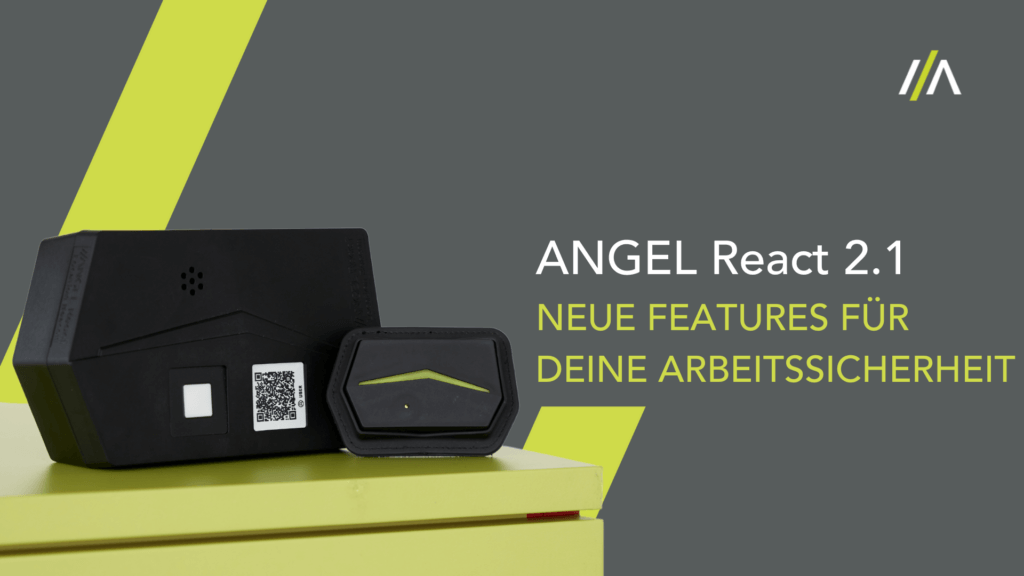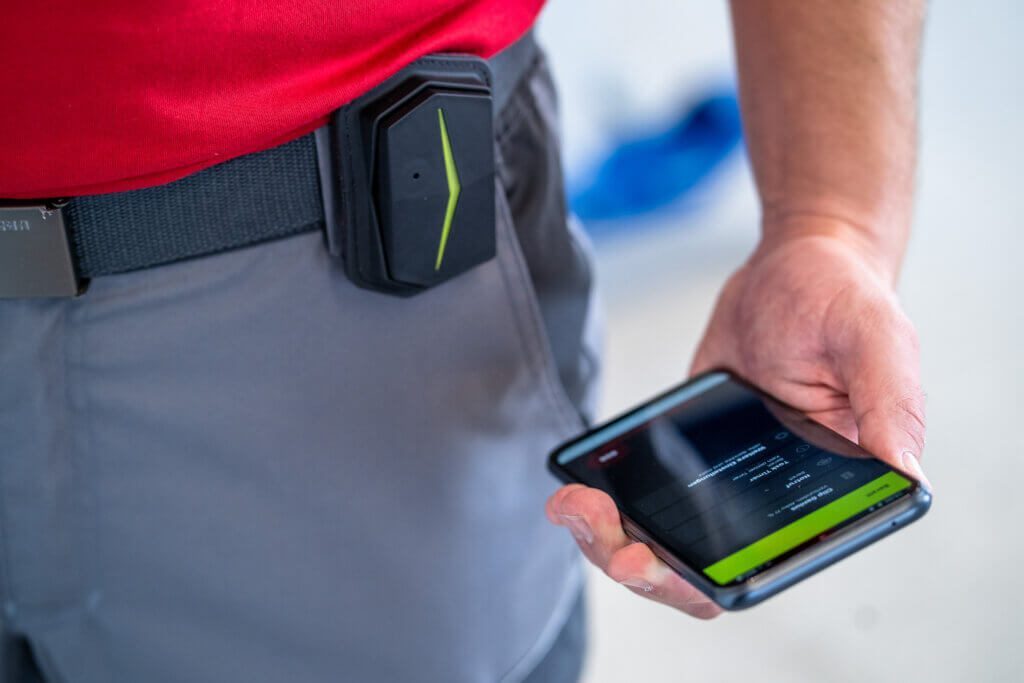As an ADRESYS team member, I’m used to working with ANGEL React.
Still, I find myself asking: Isn’t there an easier way to stay safe at work?
Could my smartphone alone be enough to make my daily tasks safer?
Let’s take a closer look at what smartphone-based safety solutions really offer.
Smartphone-based safety solutions: how reliable are they?
The advantages of smartphone-based safety tools are obvious: They are cost-effective, easily accessible, and simple to operate. A suitable app can be installed in seconds, and emergency contacts are quickly set up. Ideally, your smartphone will detect if you are lying motionless on the ground and automatically call for help.
But here is the key question: Do I really carry my smartphone on me at all times?
If it’s sitting on a desk, tucked away in a jacket, or left in a bag, it won’t help me if I fall off a ladder right next to it.
Speaking of ladders: how good does fall detection need to be?
Many apps and smartwatches rely on basic mechanisms like tilt-angle detection.
If the body is horizontal, the system triggers an alarm.
That works in many cases – but not all. What happens during an emergency in a seated position, like slumping over in a truck driver’s seat?
More advanced systems detect falls based on acceleration patterns.
But they assume an “ideal” fall – fast and unimpeded.
In reality, most falls are anything but ideal. We instinctively try to grab onto something or hit obstacles on the way down, slowing the fall.
Will the system still recognize it as a fall? And how can I test that without actually falling off a ladder?
On the other hand, it almost seems manageable when the system triggers too often and detects a fall where there wasn’t one.
One colleague experienced a false alarm while jumping off a step, another during a tire change. The list could go on.
False alarms can be resolved quickly, but they interrupt workflows and become frustrating over time.
When safety tools become a nuisance
To protect myself against immobility, I installed an app on my phone. It’s fairly easy to use, and I can even set how many seconds of inactivity should trigger an alarm.
For testing, I chose the longest delay possible. Still, I couldn’t work at my desk without constantly disabling the alarm.
So I turned the app off – and reactivated it only after finishing my computer tasks.
And guess what? My first stop at the coffee machine triggered another emergency alert.
Annoyed, I turned the app off again, unsure if I would ever use it again.
Bottom line: smartphone-based safety tools have clear advantages
- Affordable
- No extra hardware required
- Easy to use
In the future, with further development, they’ll likely play a significant role in workplace safety.
But right now, dedicated emergency detection devices offer far greater reliability, precision, and practicality.
The benefits of emergency detection devices: safety that stays with you
One major advantage of professional emergency detection devices is their consistent placement on the body.
Take the ANGEL React Genius, for example: it’s worn directly on your shirt or mounted in a holder – and only works when properly positioned.
That means no forgetting, no misplacing – just dependable protection.
Smart sensors instead of risky self-tests
The developers behind these devices have invested significant time and expertise into perfecting fall detection. Therefore, I do not need to throw myself off a ladder to see if the system works.
Modern devices detect fall accidents with high precision – and can distinguish them from simple motionlessness.
False alarms? Rare.
That’s thanks to sophisticated sensor technology:
Emergency detection devices use the best motion sensors currently available and are trained to process data with maximum accuracy.
In ANGEL React systems, for instance, a less sensitive sensor first checks for general movement.
If none is detected, a highly sensitive sensor looks for micro-movements – like breathing.
Depending on the result, the system triggers an immediate alarm (no breathing detected) or waits a bit longer (no movement, but possibly just sitting still).
SOS function: help at your fingertips
Another key feature is the manual alarm.
Whether via a button, app screen, or – in the case of ANGEL React – tapping on the device:
You can call for help without unlocking your phone or dialing a number.
Comfort matters too
And finally, there is a personal benefit to my emergency detection system – though I admit, it is a matter of preference:
The ANGEL React alarm starts quietly and gradually gets louder. That gives me time to deactivate it before it becomes disruptive.
Unlike my phone app, which sounded like a fire truck going off in my pocket – every few minutes, even without a real emergency.
Conclusion: investing in safety pays off
Smartphone solutions are practical, affordable, and accessible.
But when it comes to real safety in everyday work, dedicated emergency detection devices stand out:
- Reliable sensor technology
- Secure placement on the body
- Manual SOS triggering
- Minimal false alarms
- Comfortable daily use
For me, it’s clear: Investing in a professional emergency detection device is worth it – not just for my safety, but also for my peace of mind.




 ANGEL React & ADRESYS
ANGEL React & ADRESYS  ANGEL React & ADRESYS
ANGEL React & ADRESYS  ANGEL React & ADRESYS
ANGEL React & ADRESYS